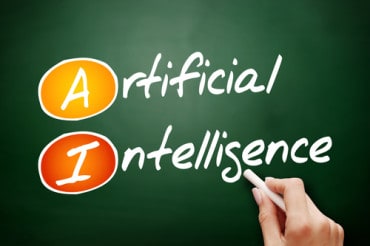
As generative AI expands into new industries, it will undoubtedly continue to evolve as experts determine how to best use these new tools to solve their challenges.
Recently, with the public release of powerful Foundation Models, generative artificial intelligence (AI) has been front and center in the AI world. Simply put, generative models learn patterns in data and can interpolate between samples they’ve seen to create something new. These models have the potential to transform industries. Generative AI has been used to create some of the most widely-known AI technologies, such as DALL-E, the image generator that has found widespread consumer adoption among creatives. And despite the technology industry’s recent challenges, future releases of generative AI models such as GPT-4 are still attracting a lot of attention.
Most often, generative models are applied to image and computer vision problems. However, they can also be useful in industrial and even scientific research and development (R&D) applications. Unlike more common discriminative AI models, generative AI creates output examples rather than labels or classifications. For instance, these models learn the concept of “dog” and generate an example that may even be a new hybrid species rather than simply labeling or recalling specific instances of “dog,” such as “Labrador.” In this way, it can transform the way AI is used from simply a tool to execute a well-defined task to a creative partner helping to solve challenging problems.
Generative models will continue to infiltrate new industries as they grow more advanced. There are already many real-world applications in-play, and research is underway to develop new generative models that expand their potential. One particularly exciting area is in materials discovery for the healthcare and energy industries – use cases include drug discovery, new battery compositions, and developing a new generation of carbon capture materials. These use cases focus on practical, real-world problems, resonate with the public, and open the door to a healthier, more sustainable future.
See also: Reports of the AI-Assisted Death of Prose are Greatly Exaggerated
Generative AI in Healthcare Research
Generative AI models have already shown promise for accurate cancer detection, especially when insufficient data exists to train more traditional models, as is the case for many cancers. New application in drug discovery is gaining significant interest due to the overwhelming number of theoretical drug possibilities. Historically, researchers have relied on computational techniques, such as virtual screening for drug discovery, which involve searching known drug or compound databases to pool a reduced number of target materials for further research. However, one of the main challenges is that, from a total of 1,060 theoretical compounds, there are very few simulated or synthesized examples, limiting the ability to identify new novel compounds using traditional methods.
Given this challenge, generative models emerged because of their capacity to generate new novel molecules by learning from a relatively small number of known examples. This, coupled with the ability to rapidly scan databases and predict the properties of materials, inspired a group of researchers to use generative models to design new drugs for treating COVID-19. The researchers developed a pipeline of generative models trained on crystal structure data to design molecules for combatting COVID-19.
This type of research, plus studies that dive into vaccine modeling and personalized medicine, lays the foundation for a world that could stop pandemics as they start and extend the human lifespan. Greatly accelerated vaccine and drug creation will be some of generative AI’s most significant contributions to the healthcare industry.
See also: A Lot of Excitement About ChatGPT, But Be Wary
Faster Battery Composition Design
Generative AI can also help scientists discover alternatives to the materials used in batteries — a process that is currently time- and resource-intensive. Concerns about climate change and the transition to electric vehicles (EVs) have motivated an explosion of research to discover new energy storage materials. Leveraging generative AI can improve high-throughput screening to identify new, better materials, which also streamlines and reduces the number of laboratory experiments.
To date, conventional machine learning has been used with some success to identify better material candidates and forecast the expected performance. Generative models offer an alternative approach – generating new, stable, and synthesizable chemical structures based on a given set of desired properties. These have the advantages of being able to integrate multi-scale data into a single coherent framework and accepting incomplete datasets, a frequent challenge with experimental data. Moreover, the behavior of such systems is often not well understood or so complex that direct simulation is not feasible, and using AI models is the only realistic high-fidelity option.
As EVs gain popularity, improved batteries will be important to ensure their success. Increased energy density is needed to improve range and reduce weight, and alternative materials are a must-have for better durability and lower costs. Improved battery performance will drive user adoption, and accelerated R&D cycles will lead to faster iteration with reduced development costs. Ultimately, generative AI has an important role to play to accelerate and ensure success as we transition to a carbon-neutral society.
New Carbon Capture Technologies
Carbon capture is another domain where generative AI can have a major impact on new materials discovery or membrane design. Carbon dioxide emissions are the largest contributor to global warming, yet separating it from large industrial waste gas streams, like power plants, is expensive and inefficient. Better separation technology would allow us to safely store vast quantities underground, such as in old oil and gas reservoirs, and greatly accelerate our transition to carbon neutrality.
In fact, IBM recently used molecular generative AI modeling to identify hundreds of molecular structures with the potential to serve as cheaper, more efficient alternatives to current carbon capture structures in industrial settings. Generative AI helped the company define search parameters and find potential structures to analyze and determine whether they may work for real-world membrane separation applications.
By accelerating the design process, generative AI can reduce the R&D cycle time and increase the viability of candidates, quickening the pace of innovation for the critical technology society needs to achieve its climate goals.
Looking Forward
As generative AI expands into new industries, it will undoubtedly continue to evolve as experts determine how to best use these new tools to solve their challenges. Overall excitement with the technology in more consumer-facing applications, such as DALL-E 2, has lowered barriers to adoption. This will support adoption in new applications, such as materials discovery for healthcare and climate change solutions — ultimately driving ongoing enhancement and improvement of the technology. Coupling this exciting new technology with human creativity will lead to the resolution of many unsolved problems and lay the groundwork for the next generation of AI technologies.





























